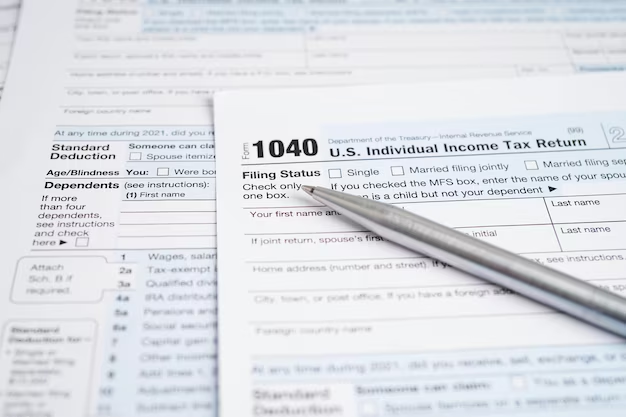Unlocking Your 1040: A Comprehensive Guide to Accessing Your U.S. Tax Return
Navigating the world of taxes can be daunting, especially when it comes to recovering crucial documents like the IRS 1040 form. Whether you're planning financial documents for the year ahead, seeking past tax records, or simply need a copy of your 1040 for personal records, understanding the process of obtaining this form is essential. In this guide, we will explore the ins and outs of acquiring your 1040, along with practical tips and related financial considerations.
📌 Understanding the 1040 Form
Before diving into the retrieval process, it's important to know the role the Form 1040 plays. The 1040 is an official document used by U.S. taxpayers to file their annual income tax returns. It includes information about your earnings, deductions, credits, and other tax-related details for a specific year.
Key Components of the 1040
- Personal Information: Name, address, and Social Security number.
- Filing Status: Options include Single, Married Filing Jointly, Married Filing Separately, Head of Household, or Qualifying Widow(er).
- Income: Details about wages, interest, dividends, and other earnings.
- Deductions and Credits: Items that can reduce taxable income.
- Tax Calculations: Determines how much tax is owed or the refund due.
Why You Might Need Your 1040
- Proof of Income: For loans or mortgage applications.
- Financial Planning: For budgeting and forecasting.
- Record Keeping: To address IRS inquiries or amendments.
📝 How to Obtain Your 1040 Form
Obtaining your 1040 form can be approached through multiple channels depending on the urgency and form availability required.
💻 Online Access via IRS Website
The most efficient method to access your 1040 is through the IRS website.
Create or Log In to Your IRS Account: Visit the IRS official website, navigate to the "Get Transcript" page, and log in or create a new account.
Request Your Tax Transcript: Select the appropriate year and document type (like "Tax Return Transcript"). You can view, download, or print your 1040 for free.
E-Delivery: Opt for an electronic delivery when available for a quicker process.
📞 Request by Phone or Mail
For those who prefer traditional means or are unable to use the online method, requesting your 1040 via phone or mail is a solid option.
IRS Telephone Assistance: Call the IRS directly and request a transcript to be sent by mail. Expect delivery within 5-10 business days.
Form 4506-T: Complete and mail Form 4506-T, Request for Transcript of Tax Return, for a paper copy.
🏢 In-Person at an IRS Office
Visiting a local IRS office can be beneficial if personal assistance is required.
Make an Appointment: Due to COVID-19 protocols, it's often necessary to schedule an appointment for personalized service.
Bring Identification: Ensure you have a government-issued ID and your social security card for verification.
🔍 Related Tax Documents and Considerations
When handling tax matters, other forms and information may become relevant based on your situation.
W-2s and 1099s
- Employment and Contract Income: If you need information about income specifics, W-2s for employment or 1099s for independent contractor work may also be obtained. Check with your employer or payer for copies.
State Tax Returns
- State vs. Federal: Remember that your state tax returns are separate. State tax agencies have their own processes for document requests, typically accessible through their respective websites.
🤔 Frequently Asked Questions about Form 1040
Navigating the 1040 process can raise several common questions. Let's address a few of these to aid your understanding.
What Should I Do if I Made an Error on My 1040?
- Consider filing a correction using Form 1040-X, Amended U.S. Individual Income Tax Return. This is crucial for rectifying significant mistakes that might impact your tax obligation.
How Long Should I Keep My 1040 and Related Tax Records?
- As a best practice, retain copies of your 1040 and any related documents for at least three years from the date you filed, or two years from the date you paid the tax, whichever is later. In the case of omissions or errors, the time frame extends to six years.
Are My 1040 and Tax Transcripts Safe Online?
- Security Features: The IRS employs secure systems to protect your information. However, ensure your personal devices are secured and practice safe browsing habits.
📊 A Quick Summary: Getting Your 1040 at a Glance
Here’s a bullet-point highlight to keep handy:
- 🔑 Online Access: Fastest route via IRS website.
- 📞 Phone/Mail: Great for those preferring traditional methods.
- 🏢 In-Person Visits: Personalized assistance available at IRS offices.
- 📄 Additional Resources:
- Amend with 1040-X for corrections.
- Retain records for three to six years.
- Access W-2s or 1099s through employers or payers.
Navigating tax-related tasks can undoubtedly feel overwhelming, but with organized strategies and the right resources, obtaining your 1040 form becomes a manageable task. Whether online, by mail, or in person, each method provides a pathway tailored to different preferences and circumstances. Stay organized, maintain secure copies of your records, and approach your tax documents proactively for smoother financial planning ahead.
